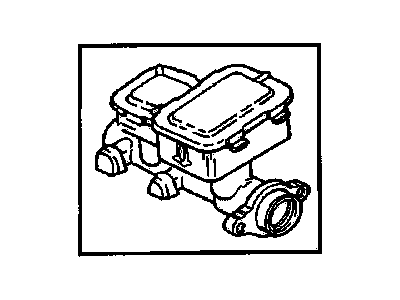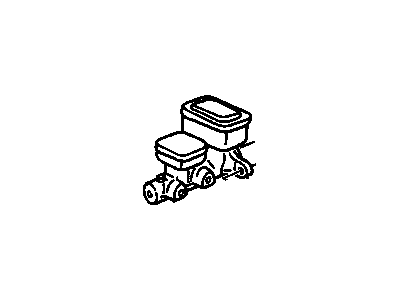
My Garage
My Account
Cart
Genuine Chevrolet Astro Brake Master Cylinder
- Select Vehicle by Model
- Select Vehicle by VIN
Select Vehicle by Model
orMake
Model
Year
Select Vehicle by VIN
For the most accurate results, select vehicle by your VIN (Vehicle Identification Number).
9 Brake Master Cylinders found
Chevrolet Astro Cylinder Asm,Brake Master
Part Number: 18029963$173.15 MSRP: $321.80You Save: $148.65 (47%)Ships in 1-2 Business Days
Chevrolet Astro Brake Master Cylinder
The Brake Master Cylinder used in Chevrolet Astro is a hydraulic assembly which is essential for the braking system and is used to transform the pressure exerted by the driver's foot into hydraulic pressure. This hydraulic pressure is then transferred to the slave cylinders which in turn release the brakes, so as to slow down or stop the vehicle. The master cylinder is composed of the pistons, seals, springs, and may have a cast iron or aluminium casing, fluid reservoirs can be either built in or can be separate depending on the year of manufacture. The Chevrolet Astro cars have dual circuit brake master cylinders to provide braking power in the event of a failure of one circuit. This design is safer than the previous one because it can continue to operate in the case of hydraulic failure.
Each OEM Chevrolet Astro Brake Master Cylinder we offer is competitively priced and comes with the assurance of the manufacturer's warranty for the part. Furthermore, we guarantee the speedy delivery of your orders right to your doorstep. Our hassle-free return policy is also in place for your peace of mind.
Chevrolet Astro Brake Master Cylinder Parts Questions & Experts Answers
- Q: How to remove the brake master cylinder on Chevrolet Astro?A:To remove the brake master cylinder, start by placing rags under the Brake Line fittings and preparing caps or plastic bags to cover the ends of the lines once they are disconnected. Then, use a flare-nut wrench to loosen the tube nuts at the ends of the brake lines where they enter the brake master cylinder. Pull the brake lines away slightly and plug the ends to prevent contamination. Remove the mounting nuts and disconnect the pushrod from the brake pedal. Move the bracket retaining the combination valve forward slightly and remove the brake master cylinder from the vehicle. Remove the reservoir covers and diaphragms, and discard any remaining fluid. Mount the brake master cylinder in a vise with blocks of wood to prevent damage. Remove the primary piston lock-ring and assembly, followed by the secondary piston assembly. Pry the reservoir from the cylinder body and remove the grommets. Do not attempt to remove the quick take-up valve. To overhaul the brake master cylinder, inspect the cylinder bore for corrosion and damage. If any is found, replace the brake master cylinder body. Lubricate and press the new reservoir grommets into the body, then press the brake master cylinder body onto the reservoir. Remove the old seals from the secondary piston assembly and install the new seals with the lips facing away from each other. Attach the spring retainer and lubricate the cylinder bore. Install the spring and secondary piston assembly, followed by the primary piston assembly and lock-ring. Inspect the reservoir cover and diaphragm, replacing any damaged parts. Insert threaded plugs into the cylinder outlet holes and fill the reservoirs with brake fluid. Loosen one plug at a time and push the piston assembly into the bore to force air out. Stroke the piston multiple times for each outlet to ensure all air is expelled. Refill the reservoirs and install the diaphragm and cover assembly. To install the brake master cylinder, reverse the removal steps and bleed the brakes.
Related Chevrolet Astro Parts
Browse by Year
2005 Brake Master Cylinder 2004 Brake Master Cylinder 2003 Brake Master Cylinder 2002 Brake Master Cylinder 2001 Brake Master Cylinder 2000 Brake Master Cylinder 1999 Brake Master Cylinder 1998 Brake Master Cylinder 1997 Brake Master Cylinder 1996 Brake Master Cylinder 1995 Brake Master Cylinder 1994 Brake Master Cylinder 1993 Brake Master Cylinder 1992 Brake Master Cylinder 1991 Brake Master Cylinder 1990 Brake Master Cylinder 1989 Brake Master Cylinder 1988 Brake Master Cylinder 1987 Brake Master Cylinder 1986 Brake Master Cylinder 1985 Brake Master Cylinder







